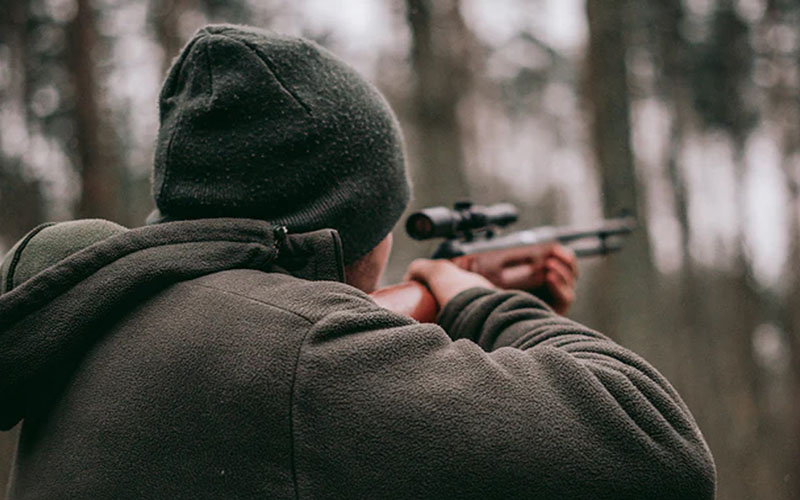HUNT RESOURCES
Your Hunting Knowledge Database:
– Hunt Game Ethology
– Game Processing & Taxidermy

Hunting Laws & Seasons
The Wildlife Fish and Game Service plays an important role when it comes to protecting and conserving hunted species. It helps sustain a healthy population for future hunts along with keeping track of present population.

Hunt Game Ethology
Here, you will find articles that contain notable facts and attributes common among many popular game animals, from numerous regions both in the United States and around the world.

Industry Links
This section of the SOS Outfitters website is for our useful hunting related websites or other websites we feel are worth visiting. If you would like to be considered on our links page, please use our link to us form.
Frequently Asked Questions
- Who needs a hunting license?
A California hunting license is required for any person taking birds or mammals. Hunters must carry licenses and be prepared to show them on request. ![]() Fish and Game Code, Section 86 defines “taking” as hunt, pursue, catch, capture, or kill, or attempt to hunt, pursue, catch, capture, or kill.
Fish and Game Code, Section 86 defines “taking” as hunt, pursue, catch, capture, or kill, or attempt to hunt, pursue, catch, capture, or kill.
- How long is a hunting license valid?
An annual hunting license is valid from July 1 through the following June 30. If the license is purchased after July 1 it is valid for the remainder of the license year.
- What do I need to do to get my hunting license?
Resident, nonresident, and junior hunters must present ONE of the following when applying for an Annual California Hunting License or Two-Day Nonresident Hunting License as proof of meeting California’s hunter education requirements:
- Evidence of an Annual California Hunting License issued in any prior year;
- A Two-Day Nonresident California Hunting License issued after the 1999/2000 license year;
- A California certificate of hunter education completion or equivalency with a unique number imprinted on it (for example: AA00000) or a California hunter education certificate with no unique number imprinted and a California hunter education validation stamp affixed;
- A certificate of successful completion of a California-approved hunter education course from any state or province; or
- Evidence of a current hunting license or a hunting license being issued in either of the two previous years from any state, province, European Country or South Africa.
- What is the minimum age requirement to purchase a hunting license?
There is no minimum age requirement for purchasing a hunting license if the applicant can show proof of hunter education. However, hunter education instructors generally ask that students be at least 10 years of age. Students must be able to read, write and understand the questions given on the written test required to complete the course. Check with a Hunter Education Instructor in your area for his/her minimum age requirement.
- Where do I purchase a hunting license?
Hunting licenses are available Online, at any CDFW License Sales Office or License Agent.
- Do I have to complete a Harvest Information Program (HIP) Survey?
Yes. If you plan to hunt migratory game birds (ducks, geese, coots, dove, band-tailed pigeon, snipe, gallinules or black brant) you must complete a HIP survey and a FREE HIP validation must be printed on your California Hunting License. HIP surveys and validations are available at any license agent, CDFW license sales office or online. Hunters may be cited for hunting migratory game birds without a HIP validation printed on their license.
- What “resident small game” species can I hunt?
![]() Section 257, Title 14, of the CCR states, “Resident small game” means the following resident game birds: Chinese spotted doves, ringed turtledoves of the family Columbidae, California quail and varieties thereof, gambel or desert quail, mountain quail and varieties thereof, blue grouse and varieties thereof, ruffed grouse, sage grouse (sage hens), white-tailed ptarmigan, Hungarian partridges, red-legged partridges, including the chukar and other varieties, ring-necked pheasants and varieties, and wild turkeys of the order Galliformes; and the following game mammals: jackrabbits and varying hares (genus Lepus), cottontail rabbits, brush rabbits, pigmy rabbits (genus Sylvilagus), and tree squirrels (genus Sciurus and Tamiasciurus).
Section 257, Title 14, of the CCR states, “Resident small game” means the following resident game birds: Chinese spotted doves, ringed turtledoves of the family Columbidae, California quail and varieties thereof, gambel or desert quail, mountain quail and varieties thereof, blue grouse and varieties thereof, ruffed grouse, sage grouse (sage hens), white-tailed ptarmigan, Hungarian partridges, red-legged partridges, including the chukar and other varieties, ring-necked pheasants and varieties, and wild turkeys of the order Galliformes; and the following game mammals: jackrabbits and varying hares (genus Lepus), cottontail rabbits, brush rabbits, pigmy rabbits (genus Sylvilagus), and tree squirrels (genus Sciurus and Tamiasciurus).
